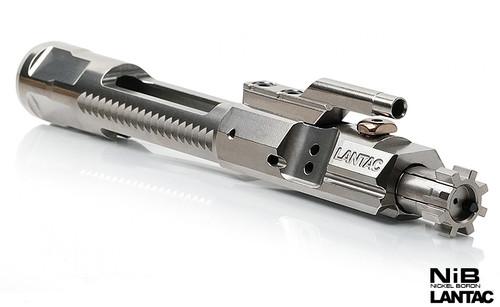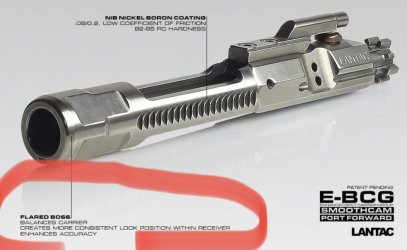Okay. you pull the trigger and the bullet goes down the barrel. Peak powder pressure is achieved in the first few inches of the barrel. As the bullet is going down the barrel you have a few things happening that decrease the pressure. Cooling and an ever increasing volume. So lets say that you start out with 50,000 psi. the pressure has decreased to say 30,000 psi in a a carbine length gas tube and 22,000 in a mid length and 18,000 psi in a rifle length. Just examples.
This 30,000 psi gas goes roaring back in the gas tube and launches the bolt backwards. Using a heavier full auto bolt slows the return speed and because of the slight gap between the bolt and the buffer weight you have a hammering effect. The above brass plug increases the the total size of the bolt surface and doesn't pound a round ring around the face of the buffer weight.
If you have to use a heavy buffer weight which also slows down the cyclic rate it also would increase the hammer effect. Like you can kick a soccer ball, but you can't kick a 16 pound bowling ball.
So the pressure out on the rifle length gas tube is less. Going to a smaller diameter gas hole is less pressure to knock the full auto bolt back. The BCG is going slower and hits the buffer tube weight. The BTW can be made lighter so it's not getting beat up. I have one 20 inch gas gun with who knows 10,000 plus rounds through it and everything looks beatiful other than the nickle boron bolt discoloring from all the carbon and replacing the cam pin because it wore out. I was looking at my friends 16 inch carbine with only a few hundred rounds and the buffer weight was all beat up and the you could shake the rifle and it sounded loose. Yes, it's a cheap off the shelf gun and mine has over a $1000 dollars in parts that I put together without optics.
even with me slowing down the cyclic rate it still might be 10 rounds per second. I bought a trigger polishing kit to improve the Mil Spec heavy trigger. I polished one so well that it didn't always catch for the second shot. Sometimes it would burst fire 2-3 ever time you pulled the trigger and it was so rapid it sounded like one shot almost. I threw it in the garbage and just went to quality drop in triggers. LOL









